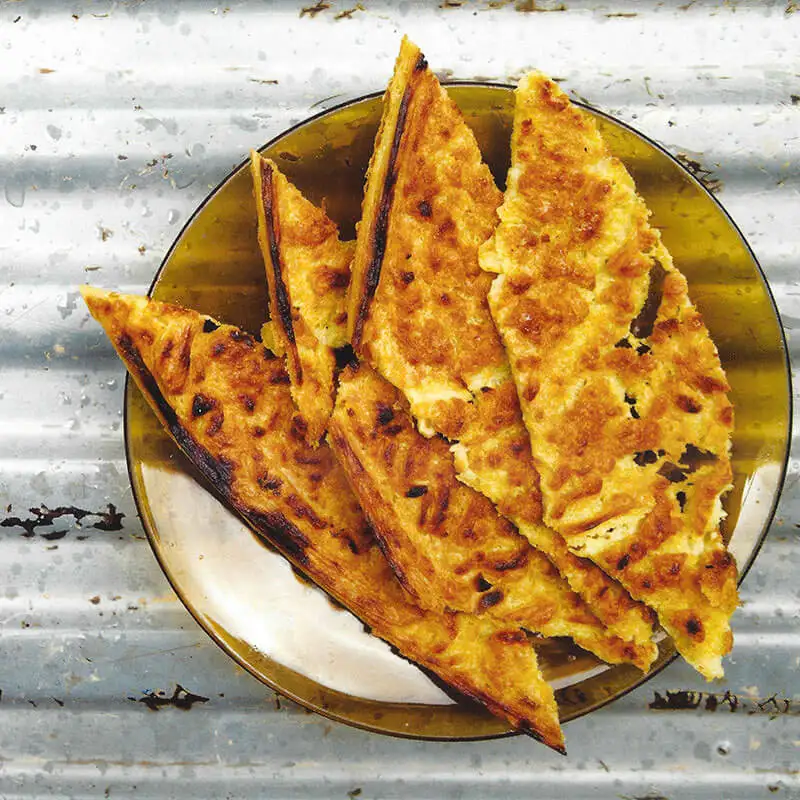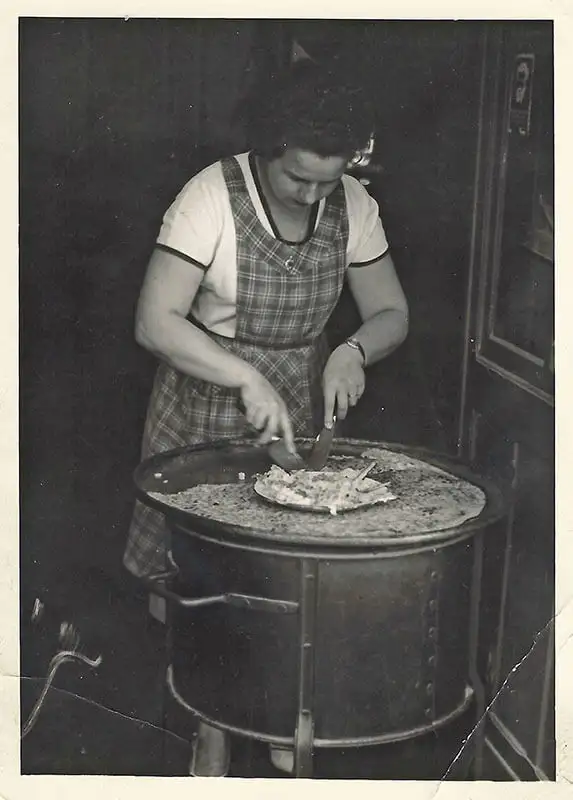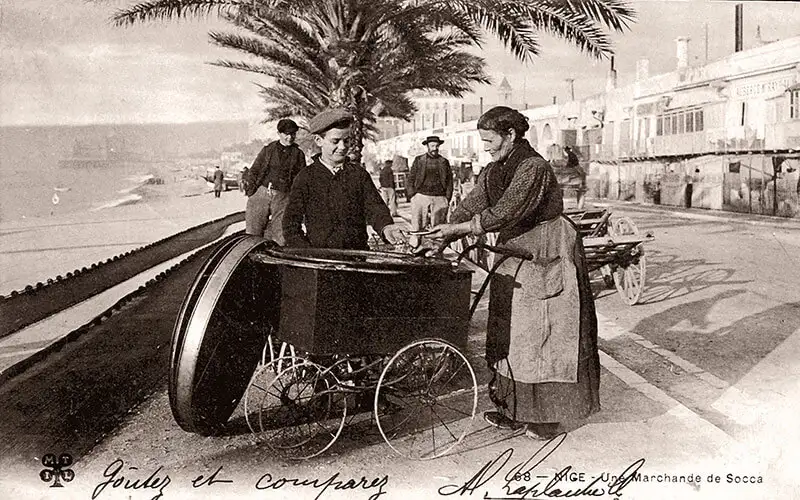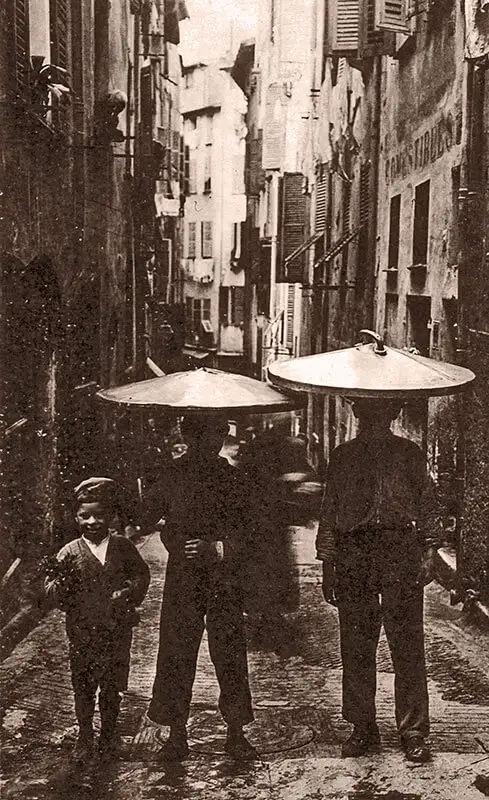History of Socca
Socca has distant origins. In Nice, this dish is entwined with the city’s identity. Let’s discover its history…
Socca is a kind of very fine “galette” or savoury pancake made from chickpea flour cooked over a wood fire, which is very popular with locals and curious tourists who are lucky enough to know it.
Chickpea has been cultivated all around the Mediterranean from the second millennium BC thanks to Phoenician sailors. It is well documented that when Nikaïa (the original name for Nice) was founded by the Phocaeans in the 14th century BC, the tradition of dishes based on chickpea flour fried in oil was popular throughout the region.
Thus for four millennia, preparations based on fried chickpeas have been found and enjoyed all around the Mediterranean. There are numerous varieties of chickpea preparations and each culture has made its own specific dish.
Since the 17th century, the people of Nice have refined this recipe in an original way. They poured the chickpea batter in a thin layer into a copper dish that held the heat well on a base of heated oil and put it in a very hot wood-fired oven. Thus was born the dish that we know, now anchored in the culinary heritage of the city under the name "socca" (for the pronunciation, the final "a" is almost silent).
In the 1900s, the dish became popular, thanks in particular to a street vendor named Theresa, who "in the hour of birds and fishermen" went to sell her produce with a travelling stove on the quai du Midi, the current quai des Etats-Unis.
Thus, in the old town or in the working-class districts of the port or Riquier, the workers took their “merenda”, a snack in Nice, with socca. It was not uncommon in the old town to hear the call of the street vendors of old: "Cauda, cauda, cauda la socca!" Fishermen, dockers, tobacco factory workers then used their portion of socca as garnish by slipping it into a small loaf of bread. This “old-fashioned” way of eating it has all but disappeared nowadays.
Socca is eaten hot, where possible right out of the oven, and is often accompanied by pepper and eaten with the fingers. Once cooled, it loses some of its taste qualities. This is why, when it is purchased, it is generally consumed "on the spot", or if it is a take away, as quickly as possible.
Socca almost disappeared in Nice in the 1960s, as the dish was deemed “too poor”, “uncultured” or simply “not very healthy”. Only a few rare places, Chez Pipo on rue Bavastro and “Thérésa” on the Cours Saleya Market, or at the Ricord cellar near Place Garibaldi, which no longer exists today, had preserved the tradition.
Fortunately, the influence of a few native Niçois, in love with Nice and its cuisine, through their books and their conferences, were able to (re)create a new passion for this dish. Today, this baton has been passed along the generations and it is possible to taste Socca in many restaurants or simple bistros in Nice. The dish is now, more than ever, in tune with the times with established nutritional qualities: a low glycemic index, rich in vegetable proteins and, by nature, gluten-free... Enough to delight a cosmopolitan clientele of all ages.
Text written with the assistance of André Giordan, professor at the University of Geneva, specialist in the history of cuisine.





